Inside The New York Botanical Garden
Archive: December 2010
Posted in Photography on December 24 2010, by Plant Talk
May the joys of the season find you surrounded by those you love. Happy Holidays from Plant Talk!
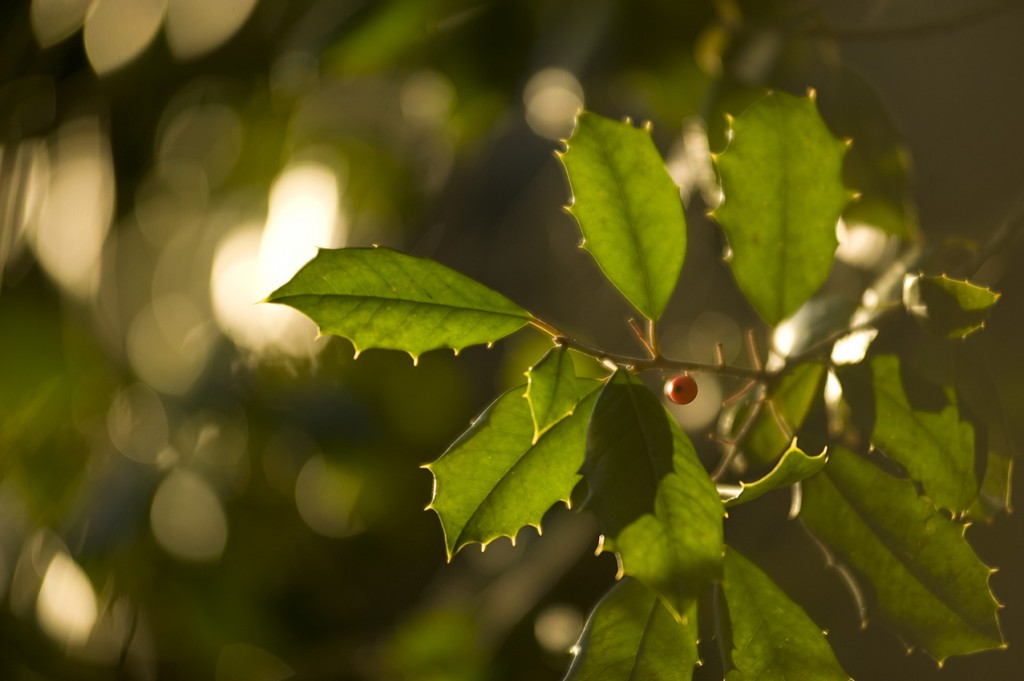
Ilex opaca (American holly) (photo by Ivo M. Vermeulen)
Posted in Photography on December 23 2010, by Plant Talk
Du kannst mir sehr gefallen! You give us so much pleasure!
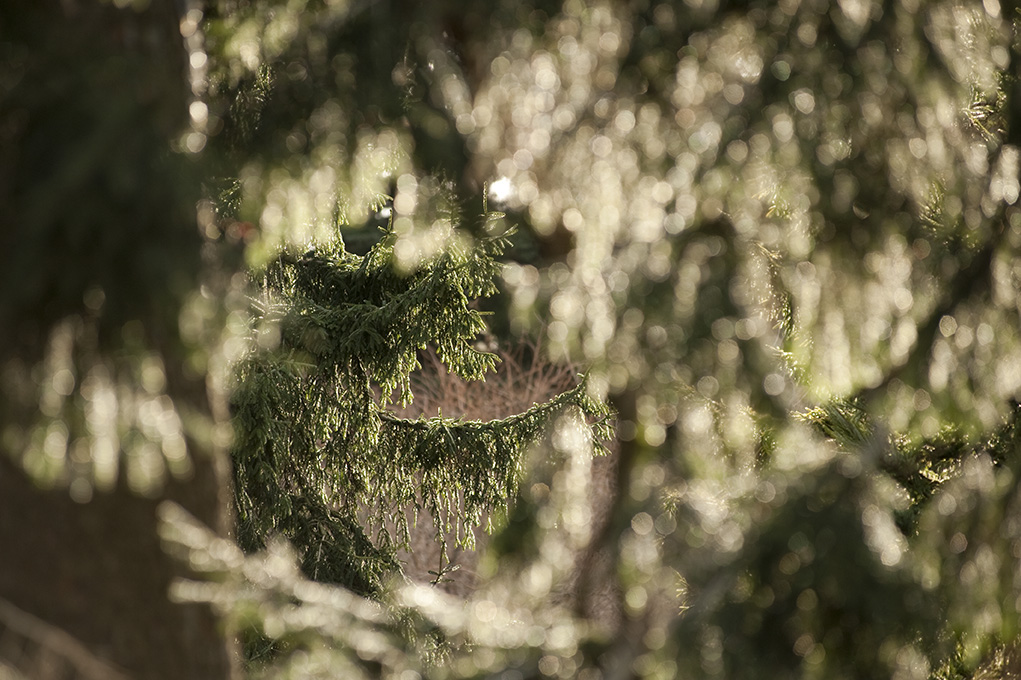
O Christmas tree! (photo by Ivo M. Vermeulen)
Posted in Around the Garden on December 22 2010, by Plant Talk
| Ann Rafalko is Director of Online Content. |
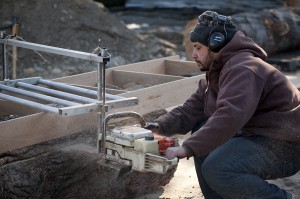 While I cannot tell you whether or not a tree makes a sound when it falls in the forest and no one is around, I can tell you that when a tree falls in the Forest at The New York Botanical Garden, we tend to find a good use for it. Case in point the beauty below, which was felled by one of this past summer’s violent storms.
While I cannot tell you whether or not a tree makes a sound when it falls in the forest and no one is around, I can tell you that when a tree falls in the Forest at The New York Botanical Garden, we tend to find a good use for it. Case in point the beauty below, which was felled by one of this past summer’s violent storms.
While fallen trees are an important part of a forest’s ecosystem, they can also be an important part of the enjoyment of the place. Especially when they’re made into a beautiful bench by Bien Hecho for Garden visitors to rest upon.
Check out the great photo essay below by Garden photographer Ivo M. Vermeulen below.
Posted in Photography on December 22 2010, by Plant Talk
The Bronx River teems with ducks at this time of year.
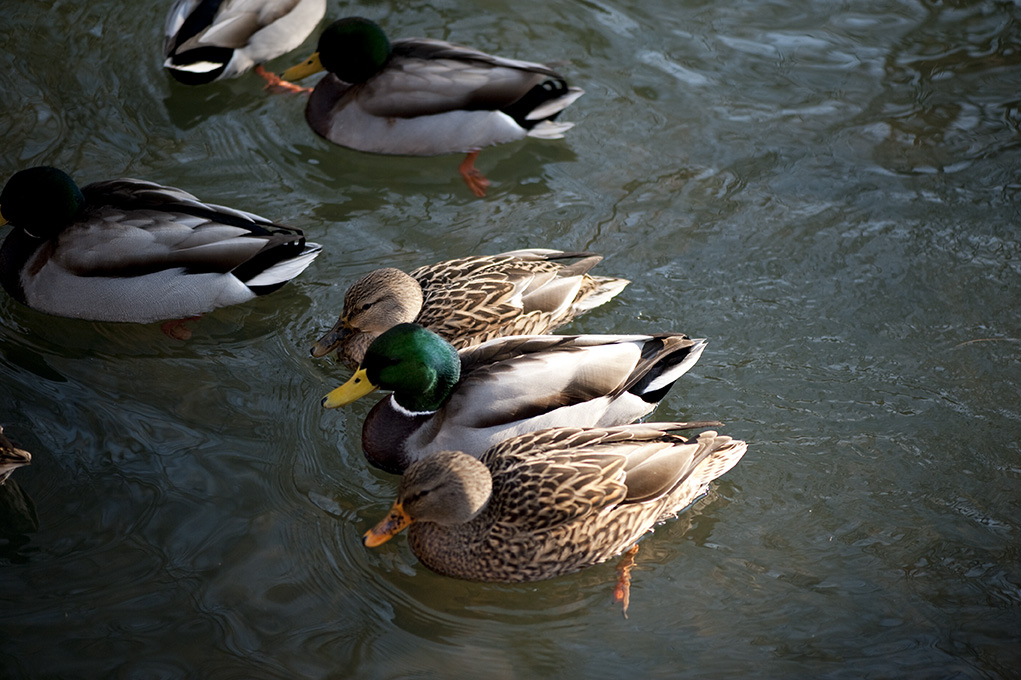
Ducks on the Bronx River (photo by Ivo M. Vermeulen)
Posted in Holiday Train Show on December 21 2010, by Plant Talk
Christmas is days away. The kids are out of school, the shopping is (maybe) done, the presents are (mostly) wrapped, and it’s time to concentrate on kicking back and reveling in the joys of the season. For many families in the New York City area, a visit to the Holiday Train Show is as much a part of the holiday season as seeing a performance of The Nutcracker or the Rockettes, gawking at the Rockefeller Center Christmas tree, ice skating in Bryant Park, and watching the animals open “presents” at the Prospect Park Zoo.

And as any seasoned New Yorker can tell you, Christmas in the city can be immensely enjoyable. It’s easy to feel in the spirit of the season when surrounded by so much joy. But, for every jolly Christmas elf, there’s a Grinch whose heart is made several sizes too small by overlong lines, overwhelming crowds, and overheated offices. Escape the lines and hullabaloo of Midtown and come experience the wonder of the Holiday Train Show at the Garden. In an effort to spread the holiday cheer, we’re offering a few tips for maximizing your Train Show enjoyment during these jolly peak weeks (December 21, 2010-January 2, 2011).
See all of our top Holiday Train Show tips below.
Posted in Photography on December 21 2010, by Plant Talk
Celebrating the longest night of the year with glittering lights. Welcome Winter!

Christmas trees (photo by Ann Rafalko)
Posted in Gardening Tips on December 20 2010, by Sonia Uyterhoeven
 |
Sonia Uyterhoeven is Gardener for Public Education. |
 One of my favorite plants from October well into December is winterberry or Ilex verticillata. It is one of those shrubs that should be put on every homeowner’s favorite list.
One of my favorite plants from October well into December is winterberry or Ilex verticillata. It is one of those shrubs that should be put on every homeowner’s favorite list.
There is nothing spectacular about winterberry early in the season. The white flowers in June are inconspicuous and for most of the season you have a handsome shrub with a decent height (generally 6-10 feet) and a nice upright oval form.
Once the fall comes the story changes – this multi-stemmed shrub is covered with a magnificent display of brightly colored berries (technically drupes). As the season progresses, the foliage colors up to a yellowish color and drops – it is one of the deciduous hollies – leaving the naked branches to display the berries in their full glory.
These hollies are dioecious (of two houses) meaning that you have male and female flower on separate plants. The females are the showy plants that are covered with the berries later in the season. The male can be tucked back in a corner out of sight.
Winterberry is a native. It is indigenous from Nova Scotia down to Florida and across to Missouri. In its native habitat it prefers moist soils and swamps but it grows prodigiously in average garden soils. In moist soils it has a habit of suckering while it retains a more upright shape in average soils.
It’s a no fuss shrub with few problems and the added benefit that the berries are a wonderful food source for winter birds. The berries take a while to soften up so they are usually passed over by migratory birds. They decorate the plant until winter residents get hungry and start to clean them off (anywhere from December to February).
They are many excellent cultivars available on the market. Buy your winterberry from a reliable nursery, so that you can be assured that the shrubs are properly labeled and that you are purchasing both male and female. Make sure that the male and female are compatible – meaning that they have similar flowering times.
One of the most popular varieties on the market is a cultivar named ‘Winter Red’ (‘Southern Gentleman’ is a good pollinator). It has great berry retention, is incredibly showy and grows to about 8 feet tall. If you are looking for a smaller plant try the compact ‘Red Sprite’ that matures to 5 feet (‘Jim Dandy’ and ‘Apollo’ are good pollinators). ‘Cacapon’ height falls somewhere in between these two reaching 6-8 feet and retains berries as well as ‘Winter Red’.
If you are looking for a different color in the fruits try ‘Winter Gold’, ‘Goldfinch’ with their golden fruits or ‘Aurantiaca’ with its orange fruits. Winterberry will brighten up your yard in the fall and early winter months. Cut off a few branches to bring inside and spice up your floral arrangements.
Posted in Photography on December 20 2010, by Plant Talk
How many branches are there in your family tree? What story do they tell?
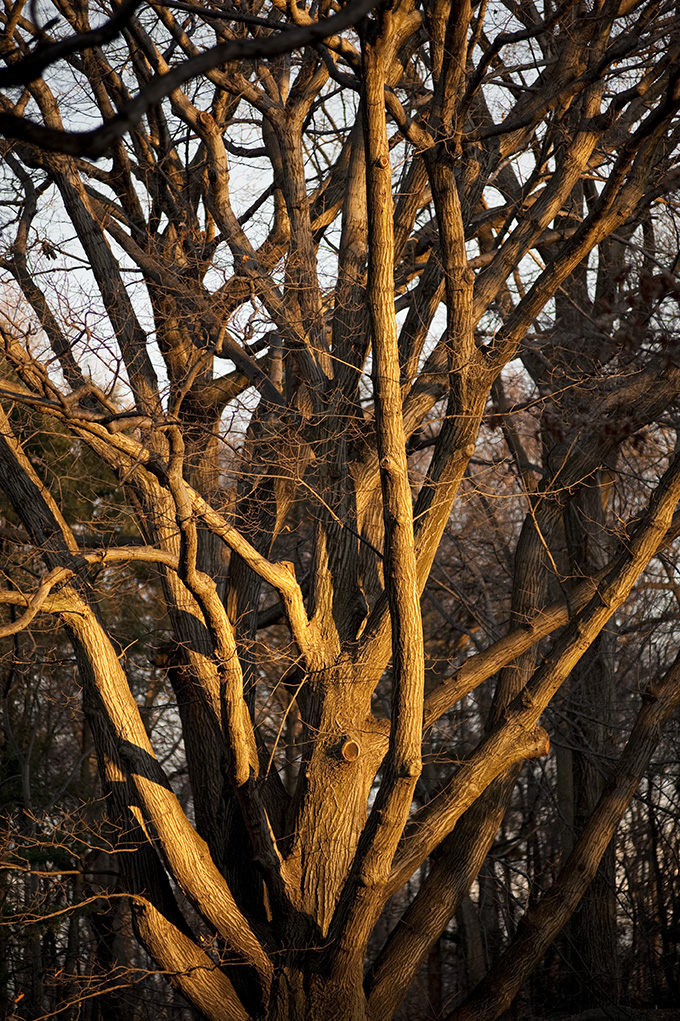
Branches (photo by Ivo M. Vermeulen)
Posted in Photography on December 19 2010, by Plant Talk
Was it you?

Tracks in the Snow (photo by Ivo M. Vermeulen)
Posted in Photography on December 18 2010, by Plant Talk
In the winter, the eye can rest. There are fewer colors, textures, and distractions from the bones of the light-painted landscape.
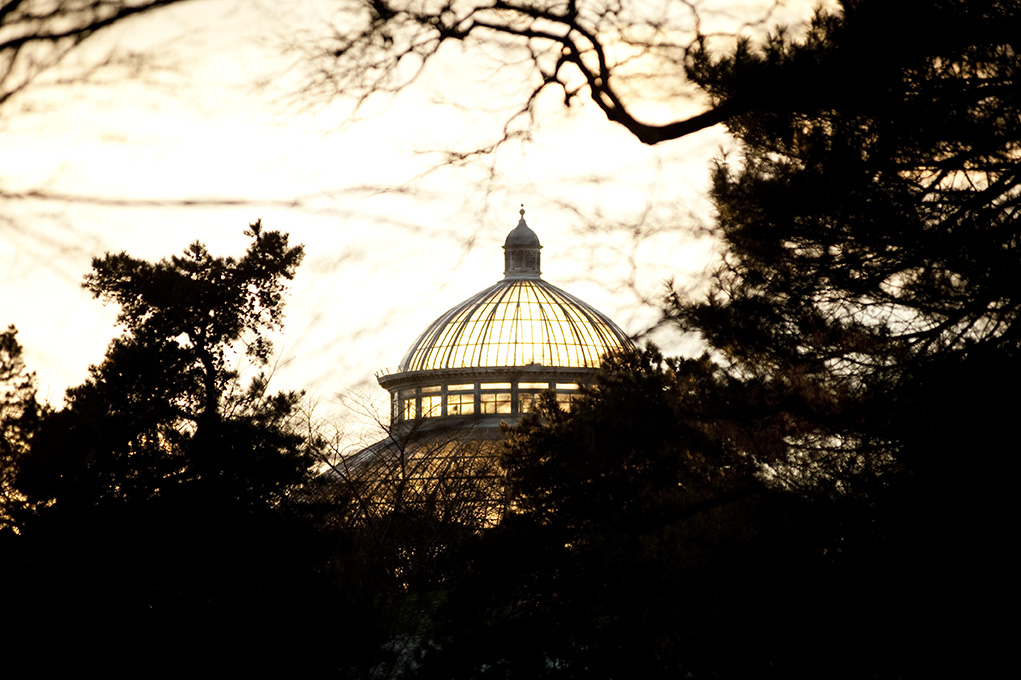
The Enid A. Haupt Conservatory (photo by Ivo M. Vermeulen)











